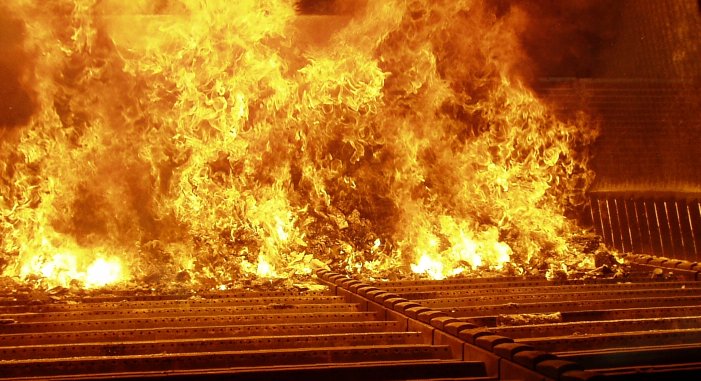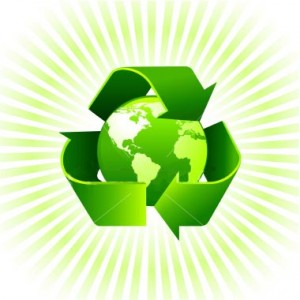Team:Imperial College/Background
From 2013.igem.org
| Line 441: | Line 441: | ||
__TOC__ | __TOC__ | ||
| - | |||
| - | |||
| - | |||
| - | + | ||
<h2>What about recycling?</h2> | <h2>What about recycling?</h2> | ||
| Line 455: | Line 452: | ||
As an example we visited Powerday, a recycling centre in north-west London to learn about Solid recovered fuel (SRF). SRF is a common type of mixed waste that is generated from commercial activities, such as construction. SRF consists of small fragments of plastic, wood, paper and fibre which are too small to be separated further by the recovery machines. 20% of what enters a recycling centre leaves as SRF. Powerday alone produces 320,000 tonnes of SRF a year. This is a waste product, costing the facilities millions in disposal and ending up at incinerators where toxic chemicals are released into the atmosphere along with large amounts of CO2. Incineration is a one-time-only affair; the resources which went into the production of these materials are lost to the atmosphere... What a waste of a valuable resource! | As an example we visited Powerday, a recycling centre in north-west London to learn about Solid recovered fuel (SRF). SRF is a common type of mixed waste that is generated from commercial activities, such as construction. SRF consists of small fragments of plastic, wood, paper and fibre which are too small to be separated further by the recovery machines. 20% of what enters a recycling centre leaves as SRF. Powerday alone produces 320,000 tonnes of SRF a year. This is a waste product, costing the facilities millions in disposal and ending up at incinerators where toxic chemicals are released into the atmosphere along with large amounts of CO2. Incineration is a one-time-only affair; the resources which went into the production of these materials are lost to the atmosphere... What a waste of a valuable resource! | ||
| - | [[File:FireySRF.png|thumbnail|center| | + | [[File:FireySRF.png|thumbnail|center|500px|Solid Recovered Fuel(SRF) contains finite resources which are currently used inefficiently.]] |
Revision as of 17:11, 30 September 2013

The Waste Issue
Waste is a major byproduct of our free market society. Every year, over 3 billion tonnes (Gt) of waste are produced within the European Union [http://ec.europa.eu/environment/waste/]. This includes municipal solid waste (MSW), industrial and hazardous waste. We have estimated that between 2005 to 2050, enough waste will be produced to create a mountain half the size of Everest. Plastic waste alone, at ten percent of the total will produce a mountain the size of Mont Blanc, the largest mountain in the EU. Even more significantly, this represents only a fraction of the world's population, approximately 500 million live within the EU. When we look at the American figures, we see that solely industrial waste comes to around 7.6 Gt [http://www.epa.gov/wastes/nonhaz/industrial/guide/], and this figure was from the 1980s, since then it has no doubt increased per capita as it has in Europe. Due to the necessities of living, we are always going to produce waste. Couple this with a human population of over 7 billion and increasing consumerism around the world and this waste really starts to add up. The mismanagement of waste is not only leading to severe environmental problems but social ones also. The shipping of waste around the world is a disturbing problem but one that makes economic sense. This needs to change.

Landfill
Every year, tonnes of waste are disposed in landfill sites and the materials are lost forever. Plastics, designed to be resistant to biodegradation, can potentially remain in the land forever. Subsequently, the “lifespan” of landfill sites are extremely limited.
Apart from these, methane and carbon dioxide produced in landfill sites cannot be captured to generate energy, but released in the atmosphere, enhancing the greenhouse effect.
Meanwhile, harmful substances including acid gases released from landfill sites severely affect human health [[#r1|[1]]]. For example, babies of women living within 7km away rom hazardous landfill sites have a significant excess of non-chromosomal congenital anomalies.

Incineration
Incineration is the conversion of materials to carbon dioxide and water. During the combustion process, heat and electricity can be generated with an efficiency of 27% [[#r2|[2]]]. Thus incineration is a one-time-only affair; the resources which went into the production of these materials are lost to the atmosphere... Meanwhile, ash generated in incinerators, counting for more than 28% of the total waste fed in, has no market as its toxic component poses risks to human health [[#r3|[3]]].
Incinerator emissions do not just damage the environment [[#r4|[4]]], people from all age groups who live 3 km to 7.5 km away from incinerators have shown substantial excess cancers [[#r5|[5]]] [[#r6|[6]]]. Statistically significant excess of cancer births have also been observed near industrial incinerators.

Gasification
Gaisification is the conversion of materials with carbon and hydrogen in their chemical structure into syngas i.e. hydrogen gas and carbon monoxide, which are combusted to produce electricity with an efficiency of 37% [[#r2|[2]]]. Gasification requires intensive energy input to achieve 1200 to 2000 working temperature and 6900 kPa working pressure [[#r2|[2]]] [[#r7|[7]]]. Gasification is still facing many challenges. For instance ash and dust can pollute the syngas, and most gasifiers requires external heat supply [[#r8|[8]]].
For materials like plastics, the gasification products are sometimes used to re-form the monomers for plastics, which costs more energy than breaking down to monomers [[#r2|[2]]], and the energy used for production of the material is wasted.

Recycle
Contents |
What about recycling?
If paper, cardboard plastics, metals and wood are kept chemically pure and physically separated then they can often be recycled and reused. However a large percentage of our waste is mixed together or contaminated with food waste and other contaminants. The consequence of this is that mixed waste cannot be recycled with current technologies.
So where does mixed waste end up?... landfill and incineration
As an example we visited Powerday, a recycling centre in north-west London to learn about Solid recovered fuel (SRF). SRF is a common type of mixed waste that is generated from commercial activities, such as construction. SRF consists of small fragments of plastic, wood, paper and fibre which are too small to be separated further by the recovery machines. 20% of what enters a recycling centre leaves as SRF. Powerday alone produces 320,000 tonnes of SRF a year. This is a waste product, costing the facilities millions in disposal and ending up at incinerators where toxic chemicals are released into the atmosphere along with large amounts of CO2. Incineration is a one-time-only affair; the resources which went into the production of these materials are lost to the atmosphere... What a waste of a valuable resource!
What else could be done with mixed waste?
We wondered if mixed wastes could be a source of metabolites and feedstock for bio-plastic producing bacteria. Since our bacteria could be engineered to utilise an array of mixed waste constituents they could overcome current limitations in recycling technologies.
Of course we also understand that waste management is a social challenge and we have explored these aspects in our human practices.
References
- http://ec.europa.eu/environment/waste/
- http://www.epa.gov/wastes/nonhaz/industrial/guide/
- http://www.theguardian.com/environment/2013/sep/20/plastic-bags-symbol-waste-recycling/
 "
"




